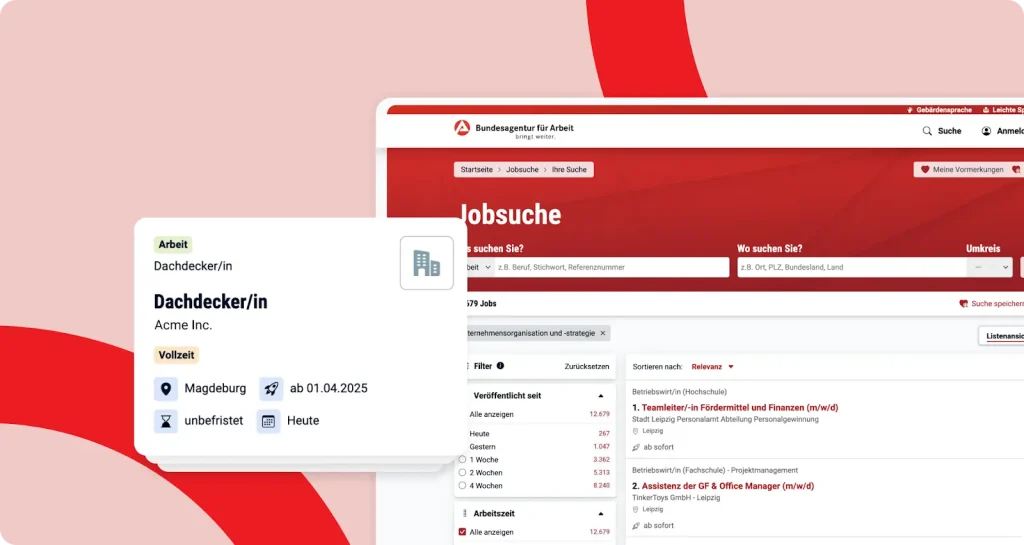The Great Return: How to get employees back to the office
Now the pandemic’s impact is steadily decreasing, businesses are actively (and eagerly) trying to get employees to return to the office. But many workers don’t share the enthusiasm. As a manager, how do you get your employees back into the office?
Table of contents
- Why employees don’t want to return to the office (and why employers want them to)
- 9 tips on how to get employees back to the office
Why employees don’t want to return to the office (and why employers want them to)
Before we explain how to get them back, let’s first see why they might not want to return to the office in the first place. After all, getting to the root of the problem is key when trying to find the best solution. Many countries around the world have now dropped their COVID-19-related restrictions. This is particularly true for Europe and North America, where most companies—including tech giants like Apple, Google, and Twitter—have fully reopened their offices. But the way employees (want to) work has changed significantly in the past two years. The pandemic has had a tremendous impact on how people think about the balance between work and private life. And right now, employees, especially the younger Gen Z and Millennials, feel empowered to demand change from employers—or they will look for an employer who will meet their demands. We discuss this topic in more detail in our separate article, The Great Resignation in 2022: How to retain great talent.
- Some employees still have health concerns and prefer avoiding crowded spaces such as offices
- Working from home gives employees more control over their working hours and they can use this flexibility to quickly run errands, do an afternoon workout, or go for lunchtime walks in nature
- They save time (and energy) by not having to commute
- While working from home they can spend more time with their family
- Research suggests that many people are more productive when working from home rather than from a busy office
- Remote work can be done from anywhere in the world, offering much more location flexibility
- Employees can fully customise and optimise their workplace setup at home according to their personal preferences
- Employees can save money to otherwise spend on things like petrol, a public transport ticket, or daycare for the kids
- Taking away the office takes away certain stress and anxiety to perform and act presentable around colleagues—many people feel more comfortable and at ease at home
- Building a strong company culture can be challenging when done (partly) remotely
- Employees might feel less connected to the company when they’re not working from the office
- Team collaboration can be more challenging and less effective remotely
- Employers have less visibility and control over what their employees are doing during their day
9 tips on how to get employees back to the office

1. Listen to your employees
As we’ve seen, there are many reasons why your employees might not want to come back to the office. And they expect you to take their reasons seriously. But nevertheless, a large-scale Future Forum survey from October 2021 found that 66% of business leaders were creating plans to return to the office after COVID-19 without input from their employees. And that’s one of the biggest mistakes employers make. Firstly, you’re more likely to make wrong assumptions and waste time and money in the process. For example, you might assume offering a certain incentive (also see point seven below), like free pizza Fridays, will get them back. But perhaps none of your employees actually want a benefit like that. Secondly, research (including the Future Forum survey) has shown that leaders like working from the office more than employees because of experience disparities. For example, a working mother is likely to prefer a hybrid working model so she can spend more time caring for her children. But most company leaders are still men who don’t have to take care of a child at home. Employers aren’t always conscious of this experience disparity, leading them to not identify reasons against returning to the office that their employees might have. So instead of formulating a return to work plan yourself, try to start a conversation with your employees and listen to their reasons. Openly ask for feedback and input and base your plan on what your employees have to say. For example, you can do this via 1-2-1 meetings or by sending out company-wide surveys.2. Be transparent
You should listen to your employees and take their feedback on board, but you should also be clear about your own reasons and expectations. And throughout the process, it’s important to be transparent and promote an ongoing feedback culture. Explain to your team why you want them back in the office and why you are making certain decisions. For example, you may decide on a hybrid working model where employees have to work from the office a minimum of three days a week. Explain why you’ve decided this (e.g. to still allow for regular on-site collaboration and in-person meetings) and actively ask your employees about their opinion. If it turns out that 90% of employees threaten to quit their job because of it, you might have to find a different solution or provide additional incentives or flexibility. This leads us to point number three.3. Be flexible and open to change
Enforcing rules your employees absolutely hate isn’t going to help anyone. It will lead to employee dissatisfaction and damage your company culture, ultimately leading to resignations and a higher employee turnover. As Amy Zimmerman, Chief People Officer at Relay Payments, explains: “You’re making a huge mistake if you require folks back in the office full time because they see progress most companies have made in the last two years, and they’ll ask, ‘why?’” The pandemic has changed the world of work and you can’t resist that. Instead, be flexible and open to change. You don’t have to go fully remote straight away, but you should be open to a hybrid working model where you allow employees to work from home on a regular basis. Flexible working hours are another good way to give your employees more control over their work-life balance.4. Create a safe space
Don’t forget that even though your country’s government might have dropped most COVID-19 measurements, some employees might still be anxious and scared of the ongoing threat of the virus. That’s why it’s important to ensure your office is a safe space for all employees. And if someone has genuine concerns or fears, don’t just force them to sit in a crowded office every day. You are just putting a lot of pressure on them, which can lead to unnecessary stress, burnout, and ultimately resignation.
5. Be inclusive and understanding
Not only create a safe space but be inclusive and understanding in the return to office plan you create. Remember that different people have different experiences, so be mindful of those differences. For example, someone who has to commute for 1.5 hours because they cannot afford to live closer to the office will likely prefer to work from home at least a few times per week to save time and money. Another employee might live close to the office but in a shared flat without a dedicated space for them to work, so they might be thrilled to work from the office five days a week. Furthermore, research has shown that traditionally underrepresented groups have been hit hardest by the pandemic. Be mindful of how certain employees might need additional support and incentives to return to the office. This ensures you retain a diverse and inclusive workforce, which in turn will help your business thrive. In fact, multiple studies have shown that employees actively seek an inclusive workplace, and they are 47% more likely to stay with an organisation if it’s inclusive.6. Invest in team-building and company culture
You probably already know that team building and company culture are important, but to get employees back in the office this holds more true than ever. According to a McKinsey study, employees seek inclusive workplaces and for companies to achieve this, they want them to invest in three key areas:- Work-life support
- Team building
- Mutual respect
7. Focus on incentives rather than consequences
Some employers may be tempted to create a plan and then try to enforce it with sanctions. For example, some employers may threaten to withhold an employee’s salary if the person doesn’t return to the office. Now, although in many cases the employer will have the legal right to do so if the job location is stated in the employee contract (more on contracts in the next point), this often only leads to a disgruntled workforce. Instead, try to focus on giving incentives and offering benefits that make it more attractive for employees to return to the office. For example, here at JOIN, we now work according to a hybrid model in which employees are asked to work from home a maximum of two days per week. In return, employees following this model get access to a bunch of attractive perks, including monthly transportation tickets and gym memberships. In other words, the narrative is flipped around. Instead of punishing employees for not complying, we reward them when they do.8. Review employee contracts
When switching to this new way of working, it might be worth reviewing both existing and future employee contracts. First, although we strongly advise against using what’s stated in an existing contract to force an employee back to the office, the contract can give an employer some extra leverage. For example, you can argue that even though the contract states the work has to be done from the office, you are willing to revisit this if the employee considers coming to the office at least two days per week. Reviewing and adapting both existing and future contracts also means that both parties will have something to fall back on moving forward. For future employees, it makes sense to clearly communicate your working model and return to the office plan directly in the job ad.9. Keep communicating and adapting
Lastly, we cannot stress enough how important it is to keep communicating with your employees and adapt your policies if needed. The world of work keeps rapidly changing and if you want to retain top talent you need to change with it. That’s why continuously promoting an open feedback culture in your organisation is now more important than ever. And rather than forcing everyone back in the office, you are probably better off adapting to a hybrid or remote working model. Not sure yet which model is best for your organisation? Then read our complete guide on remote vs. hybrid work!Frans Lelivelt
Frans is JOIN's multilingual Senior Content Manager. His main topic of interest in the recruitment space is DEI and how companies can reduce their (unconscious) biases to make the world of work a fairer, kinder place for everyone. Outside of work, he tries to do the same for animals, spending much of his spare time in the kitchen preparing plant-based feasts.


